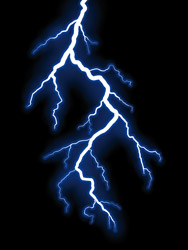
Posted to News on 24th Aug 2018, 10:11
Why surge protection is essential
Proper electrical protection is the key to safely removing the effects of dangerous overcurrents due to short circuits, overloads and voltage transients from switching surges, and other abnormal conditions. Kevan Cowley, Electronic & Safety Specialist with Wieland Electric, examines how and why protection is often overlooked.

When thinking of surge protection the first thought is lightning strikes! And, yes, with 100 strikes per second and 8 million strikes per day worldwide (according to Met Office data) this is a major hazard to buildings, offices and factories, though many of these buildings have lightning conductors to carry the electricity harmlessly to the ground. This will still leave some transient or internally generated surges from man-made loads that we need to be aware of and manage, which is where system protection is paramount when looking at keeping downtime to a minimum, avoiding equipment damage and protecting personnel.
Circuit protection is critical to protect a machine from currents greater than the machine's or device's current-carrying capacity. Proper electrical protection is the key to safely removing the effects of dangerous overcurrents caused by short circuits, overloads and voltage transients from switching surges and other abnormal conditions.
The main guidance to protection from surge, overvoltage and overcurrent risks can be found from standards (Surge protection to BS EN 62305 / BS EN 61643) and within the 17th Edition wiring regulations (Types of SPD / Lightning Protection Zones, Section 534 - Devices for Protection Against Overvoltage). Good wiring practices, grounding, and bonding techniques to protect machines and personnel are key to supplementing overcurrent protective devices.
June 2017 saw the start of the road to the 18th Edition of the Wiring Regulations, which come into effect in January 2019. Looking at the new Section 534, this is about the installation of the SPDs as required or specified in section 443 or elsewhere. The Lightning Protection Zone (LPZ) concept was featured in the 17th Edition but now has far more detail in the 18th Edition. The concept comes from BS EN 62305, the full lightning protection standard, and describes the way SPDs are deployed within the installation.
Surge protection devices

With the increasing use of, and dependence on, technology in just about every business, protecting sensitive equipment is becoming ever more important. In a manufacturing or logistic operation, for example, disruption to processing or handling systems can have a catastrophic effect on productivity. Similarly, in the financial sector, server rooms are mission-critical and any failure can lead to losses of millions of pounds every hour.
Interference-free operation, therefore, is crucial and the integrity of these systems has to be maintained even under relatively extreme circumstances such as thunderstorms. And while safety devices such as fuses will protect against excess current, they are ineffective against the high-voltage transients and short-duration spikes that lightning can generate on power supply lines.

This is an area that is often overlooked or not fully understood by system designers. Branch circuit protection does not necessarily protect a load such as a power supply, a PC or a programmable logic controller (PLC). To provide this protection, Type 3 SPDs provide additional equipment protection, whether branch circuit protection is already provided or not required. For process control, SPDs must withstand the harsh environments common in process applications, and do so in ever-smaller packages as the space in cabinets decreases. And, as the available space is reduced and other requirements become more demanding, SPDs are constantly changing to meet these new challenges.
This, of course, is all fairly obvious and forms the basis of the lightning protection systems that are incorporated into many buildings. However, despite the clear dangers and the critical nature of many systems, the high volume of insurance claims for lightning damage indicates that many building operators are failing to ensure appropriate lightning measures are taken.
To promote a comprehensive approach to overvoltage control, the emphasis is on covering all cables transiting a zonal interface. This ensures that natural events such as lightning are dealt with as well as the internally generated surges from man-made loads. The standard also guides the designer to look at the practicalities of the installation and performance parameters within the distribution board and closer to the sensitive end loads. So using a combination of Type 1, 2 and 3 SPDs will ensure complete security and protection to maintain process production and profit.
Learn more about surge protection at www.wieland.co.uk.
Ash House, Tanshire Park
Shackleford Road
GU8 6LB
UNITED KINGDOM
+44 (0)1483 531213






























